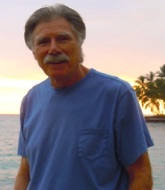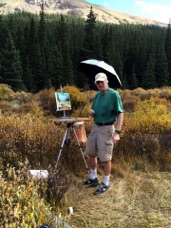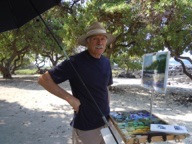



ARTISTS STATEMENT
I divide my painting time between plein air pastel landscapes and acrylic abstract paintings these days. With my pastels I like to pull the viewer into the mystery or the delight of a certain place or into the excitement of a certain type of lighting that may only come at a particular time of day. With my abstracts I can be much more intuitive and spontaneous. I often percieve my abstract painting as a landscape even when the intention was a design problem that I needed to solve.
A part of the fascination of the pastel medium is the intensity and immediacy of expression one can accomplish. Pastels allow me to use very intense colors that can be laid down quickly with a minimum of blending. Some of the effects that are possible with pastels are difficult to achieve with other media. Since there is no brush between the artist and the canvas when working with pastels, I feel that I am more connected to the painting process than with other media, much like finger painting.
Acrylic painting on the other hand is very different. As a fast drying medium I have to lay in the images quickly and directly. Of course the beauty of acrylic painting is the ability to paint over and modify the passages that need to be modified or replaced. Sometimes I might paint over a painting many times before I achieve a final product that I am satisfied with.
I studied architecture at The University of Colorado which focuses on design and composition (with emphasis on three-dimensional design). I also studied fine arts as time permitted. My preferred media were initially ceramics, watercolor and pencil. A serious interest in painting was renewed when I discovered the medium of soft pastels in the early 1990's. Since that time I have been mostly self-taught although I have participated in some classes and workshops.
Just as a picture can convey a thousand words, a single stroke or gesture can convey a great deal of information about the subject of a painting. My goal is to develop a style that has an economy of strokes and which conveys the emotional content or the concept of the painting to the viewer with a minimum amount of visual information necessary to do the job. This type of artistic communication can be viewed in a more intuitive way than work done in a style of realism because it leaves room for more interaction by the viewer. If I have evoked some response from the viewer then I have succeeded.
